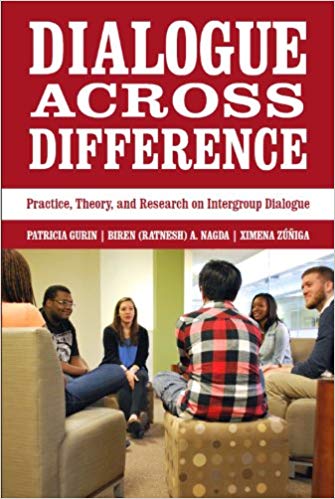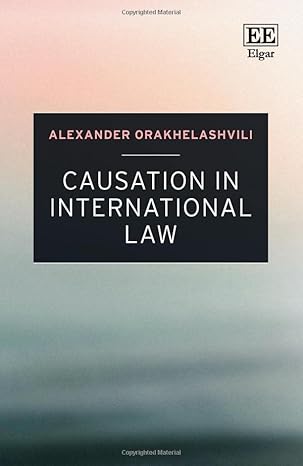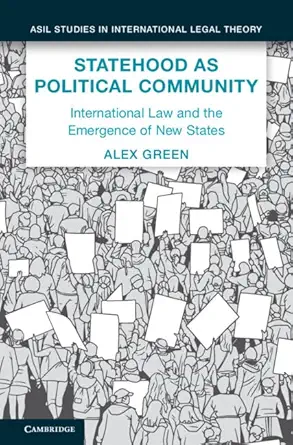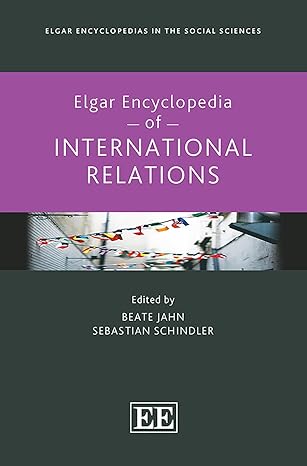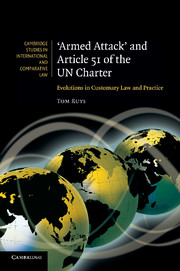Due to continuing immigration and increasing racial and ethnic inclusiveness, higher education institutions in the United States are likely to grow ever more diverse in the 21st century. This shift holds both promise and peril: Increased inter-ethnic contact could lead to a more fruitful learning environment that encourages collaboration. On the other hand, social identity and on-campus diversity remain hotly contested issues that often raise intergroup tensions and inhibit discussion. How can we help diverse students learn from each other and gain the competencies they will need in an increasingly multicultural America? Dialogue Across Difference synthesizes three years’ worth of research from an innovative field experiment focused on improving intergroup understanding, relationships and collaboration. The result is a fascinating study of the potential of intergroup dialogue to improve relations across race and gender. First developed in the late 1980s, intergroup dialogues bring together an equal number of students from two different groups – such as people of color and white people, or women and men – to share their perspectives and learn from each other. To test the possible impact of such courses and to develop a standard of best practice, the authors of Dialogue Across Difference incorporated various theories of social psychology, higher education, communication studies and social work to design and implement a uniform curriculum in nine universities across the country. Unlike most studies on intergroup dialogue, this project employed random assignment to enroll more than 1,450 students in experimental and control groups, including in 26 dialogue courses and control groups on race and gender each. Students admitted to the dialogue courses learned about racial and gender inequalities through readings, role-play activities and personal reflections. The authors tracked students’ progress using a mixed-method approach, including longitudinal surveys, content analyses of student papers, interviews of students, and videotapes of sessions. The results are heartening: Over the course of a term, students who participated in intergroup dialogues developed more insight into how members of other groups perceive the world. They also became more thoughtful about the structural underpinnings of inequality, increased their motivation to bridge differences and intergroup empathy, and placed a greater value on diversity and collaborative action. The authors also note that the effects of such courses were evident on nearly all measures. While students did report an initial increase in negative emotions – a possible indication of the difficulty of openly addressing race and gender – that effect was no longer present a year after the course. Overall, the results are remarkably consistent and point to an optimistic conclusion: intergroup dialogue is more than mere talk. It fosters productive communication about and across differences in the service of greater collaboration for equity and justice. Ambitious and timely, Dialogue Across Difference presents a persuasive practical, theoretical and empirical account of the benefits of intergroup dialogue. The data and research presented in this volume offer a useful model for improving relations among different groups not just in the college setting but in the United States as well.
چکیده فارسی
با توجه به ادامه مهاجرت و افزایش شمول نژادی و قومیتی، موسسات آموزش عالی در ایالات متحده احتمالاً در قرن بیست و یکم تنوع بیشتری خواهند داشت. این تغییر نوید و خطر دارد: افزایش تماس بین قومی می تواند منجر به یک محیط آموزشی پربارتر شود که همکاری را تشویق می کند. از سوی دیگر، هویت اجتماعی و تنوع در دانشگاه همچنان موضوعات مورد مناقشه داغی هستند که اغلب تنشهای بین گروهی را افزایش میدهند و مانع از بحث میشوند. چگونه میتوانیم به دانشآموزان مختلف کمک کنیم تا از یکدیگر بیاموزند و شایستگیهایی را که در آمریکای چندفرهنگی فزاینده نیاز دارند، به دست آورند؟ Dialogue Across Difference تحقیقات سه ساله را از یک آزمایش میدانی ابتکاری با تمرکز بر بهبود درک بین گروهی، روابط و همکاری ترکیب می کند. نتیجه یک مطالعه جذاب از پتانسیل گفتگوی بین گروهی برای بهبود روابط بین نژاد و جنسیت است. گفت و گوهای بین گروهی برای اولین بار در اواخر دهه 1980 ایجاد شد، تعداد مساوی دانش آموز از دو گروه مختلف - مانند رنگین پوستان و سفیدپوستان، یا زنان و مردان - را گرد هم می آورد تا دیدگاه های خود را به اشتراک بگذارند و از یکدیگر بیاموزند. برای آزمایش تأثیر احتمالی چنین دورههایی و ایجاد استانداردی از بهترین عملکرد، نویسندگان کتاب گفتگو درمیان تفاوت نظریههای مختلف روانشناسی اجتماعی، آموزش عالی، مطالعات ارتباطی و مددکاری اجتماعی را برای طراحی و اجرای یک برنامه درسی یکسان در 9 دانشگاه در سراسر جهان وارد کردند. کشور. برخلاف اکثر مطالعات انجام شده در مورد گفتگوی بین گروهی، این پروژه از انتساب تصادفی برای ثبت نام بیش از 1450 دانش آموز در گروه های آزمایشی و کنترل استفاده کرد که شامل 26 دوره گفتگو و گروه های کنترل در مورد نژاد و جنسیت بود. دانشآموزان پذیرفتهشده در دورههای گفتگو در مورد نابرابریهای نژادی و جنسیتی از طریق خواندن، فعالیتهای ایفای نقش و تأملات شخصی یاد گرفتند. نویسندگان پیشرفت دانشآموزان را با استفاده از روش ترکیبی، از جمله نظرسنجیهای طولی، تجزیه و تحلیل محتوای مقالات دانشجویی، مصاحبه با دانشجویان، و نوارهای ویدئویی از جلسات، پیگیری کردند. نتایج دلگرم کننده است: در طول یک ترم، دانش آموزانی که در گفتگوهای بین گروهی شرکت کردند، بینش بیشتری نسبت به نحوه درک اعضای گروه های دیگر از جهان پیدا کردند. آنها همچنین در مورد زیربنای ساختاری نابرابری متفکرتر شدند، انگیزه خود را برای پل زدن بر اختلافات و همدلی بین گروهی افزایش دادند و به تنوع و اقدام مشترک ارزش بیشتری دادند. نویسندگان همچنین خاطرنشان می کنند که تأثیرات چنین دوره هایی تقریباً بر همه اقدامات مشهود بود. در حالی که دانشآموزان افزایش اولیه در احساسات منفی را گزارش کردند - که نشانهای از دشواری پرداختن آشکار به نژاد و جنسیت است - این تأثیر یک سال پس از دوره دیگر وجود نداشت. در مجموع، نتایج بهطور قابل ملاحظهای منسجم هستند و به یک نتیجهگیری خوشبینانه اشاره میکنند: گفتوگوی بینگروهی چیزی بیش از صحبت صرف است. این ارتباط سازنده را در مورد تفاوت ها و بین آنها در خدمت همکاری بیشتر برای برابری و عدالت تقویت می کند. بلندپروازانه و به موقع، گفتگو در میان تفاوت، گزارش عملی، نظری و تجربی متقاعدکننده ای از مزایای گفتگوی بین گروهی ارائه می دهد. داده ها و تحقیقات ارائه شده در این جلد، مدلی مفید برای بهبود روابط بین گروه های مختلف نه تنها در محیط دانشگاه، بلکه در ایالات متحده نیز ارائه می دهد.
ادامه ...
بستن ...
Ebook details:
عنوان: Dialogue Across Difference Practice, Theory, and Research on Intergroup Dialogue (9780871544766)
نویسنده: Patricia Gurin, Biren (Ratnesh) A. Nagda, Ximena Zuniga
ناشر: Russell Sage Foundation (March 15, 2013)
زبان: English
شابک: 0871544768, 978-0871544766
حجم: 3 Mb
فرمت: True Pdf
ادامه ...
بستن ...
